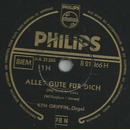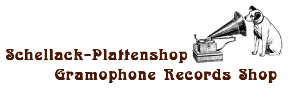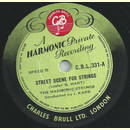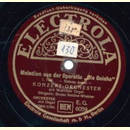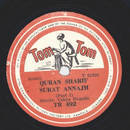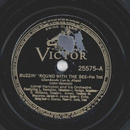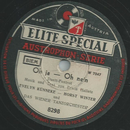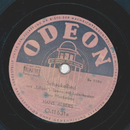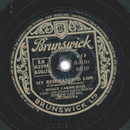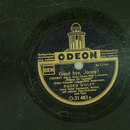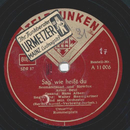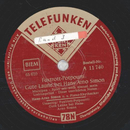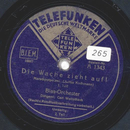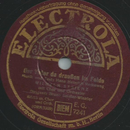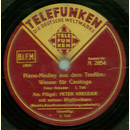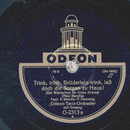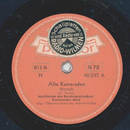
Ihr Ansprechpartner rund um die Schellackplatte
Die Faszination der Schellackplatte mit 78 U/min ist ungebrochen, und die Zahl der Liebhaber nimmt ständig zu.
Schön, dass Sie den Weg in den Schellack-Plattenshop gefunden haben. Stöbern Sie in unseren Angeboten, vielleicht versetzt Sie der eine oder andere Titel zurück in Ihre Kindheit oder Jugend. Oder Sie lassen sich an große Stimmen, berühmte Dirigenten und interessante Kompositionen der Vergangenheit erinnern, die ohne die Grammophonplatte nur noch Namen und Begriffe ohne tieferen Inhalt wären. Schellackplatten sind zeitlos und werden noch viele Jahrzehnte existieren, wenn CDs schon längst zerfallen sind.
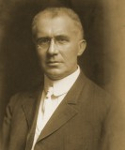
Emil Berliner
(1851 - 1929)
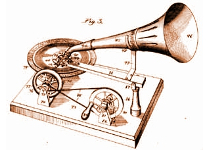
Berliner's erstes Grammophon
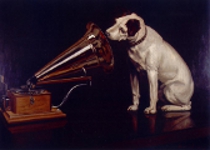
Barrauds Gemälde
"His Master's Voice"
Emil Berliner, aus Hannover stammend und 1870 nach Amerika ausgewandert, meldete 1887 ein Patent auf einen scheibenförmigen Tonträger an, in den spiralförmig eine Rille geritzt wurde. Er selbst nannte diese Scheibe „Schallplatte“. Bestandteil des Patents war auch ein Aufnahme- und Abspielgerät (die sogenannte „Kaffee-Mühle“), der Vorläufer des Grammophons.
Ein großartiger Werbeerfolg wurde ein Logo, das auf der folgenden Geschichte basiert: Der englische Maler Francis Barraud hatte nach dem Tod seines Bruders dessen Hund „Nipper“ übernommen. Wenn er hin und wieder seinen Edison-Phonographen in Betrieb nahm, konnte er beobachten, dass der Hund regelmäßig vor dem Apparat saß und lauschte. Da kam dem Maler der Gedanke, dies im Bild festzuhalten. Barraud bot das Gemälde der „Edison & Bell Phonograph Company“ an, diese lehnte jedoch ab. So ging der Maler zu Berliner's „Gramophone Company“. Dessen Direktor Owen teilte ihm mit, dass er an dem Gemälde interessiert sei, wenn er den Hund vor dem Grammophon seiner Firma malen würde. Im September 1899 war das Bild fertig und wurde zusammen mit dem Titel „His Master's Voice“ („Die Stimme seines Herrn“) für 100 Pfund von GRAMOPHONE gekauft. Sicherlich hat dieses Firmenlogo die rasche Verbreitung der Grammophonplatte stark gefördert, weil es auch ein Sinnbild für Wiedergabetreue darstellte.
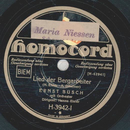
Ernst Busch - Lied der Bergarbeiter / Lied der Arbeitslosen
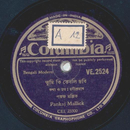
Pankaj Mallick - Bengali Modern
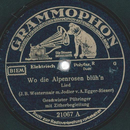
Geschwister Pühringer - Wo die Alpenrosen blüh'n / Der Bua vom Zillertal
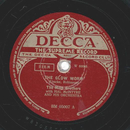
The Mills Brothers - The Glow Worm / After All
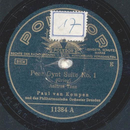
Paul van Kempen - Peer Gynt Suite No. 1
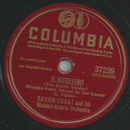
Xavier Cugat and his Waldorf-Astoria Orchestra - El Botellero / Drume Negrita
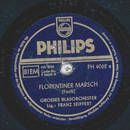
Großes Blasorchester: Franz Seiffert - Florentiner Marsch / Fliegermarsch

Eddie Saxon - Ich möcht einmal verliebt sein / Wer nimmt die Liebe ernst
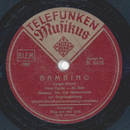
Die vier Harmonisten - Bambino / Sing mir das Lied noch einmal

Barnabas von Géczy mit seinem Orchester - Wellenreiter / Bitte, bitte, bitte, bitte
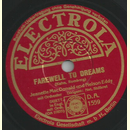
Jeanette MacDonald und Nelson Eddy - Farewell to dreams / Will you remember

Alan Bush / Viktor M'Bobo - a) High Barkary b) Billy Boy / a) Sit and wa sam b) Iquaqua c)Madlamini
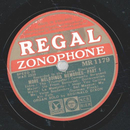
Organ Solo by Reginald Dixon - More Melodious Memories Teil I und II
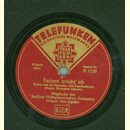
Mitglieder des Berliner Philharmonischen Orchesters - Tanzen möcht' ich / Eva-Walzer
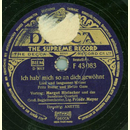
Margot Hielscher und das Sunshine-Quartett - Ich hab mich so an dich gewöhnt / Anette
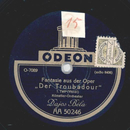
Dajos Béla - Fantasie aus "Der Troubadour"
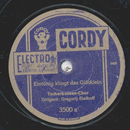
Tscherkessen-Chor - Eintönig klingt das Glöcklein / Lied der Wolgaschiffer
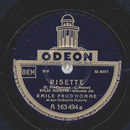
Emile Prud'homme - Risette / Sourire Andalou
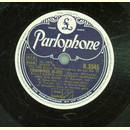
Billy Banks - The 1952 Super Rhythm Style Series No. 27 / The 1952 Super Rhythm Style Series No. 28

N.Ramescu Orch. - Matrosen-Streiche / Kleinbahnfahrt
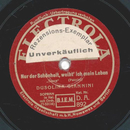
Dusolina Giannini - Als euer Sohn einst fort zog / Nur der Schöhnheit, weih´t ich mein Leben
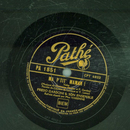
Fredo Gardoni & son Ensemble - Ma p'tit' Maman! / Quand tu reviendras
